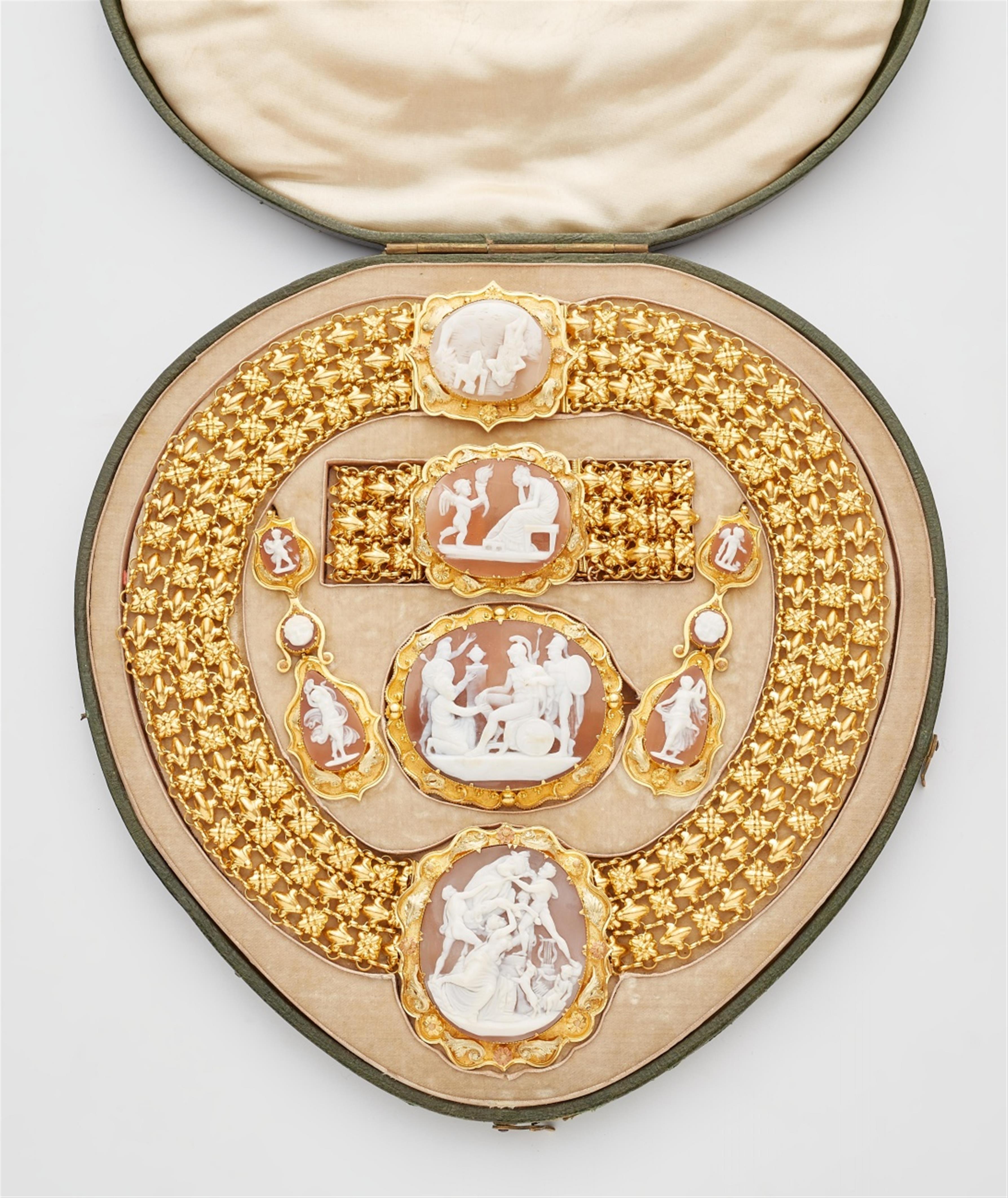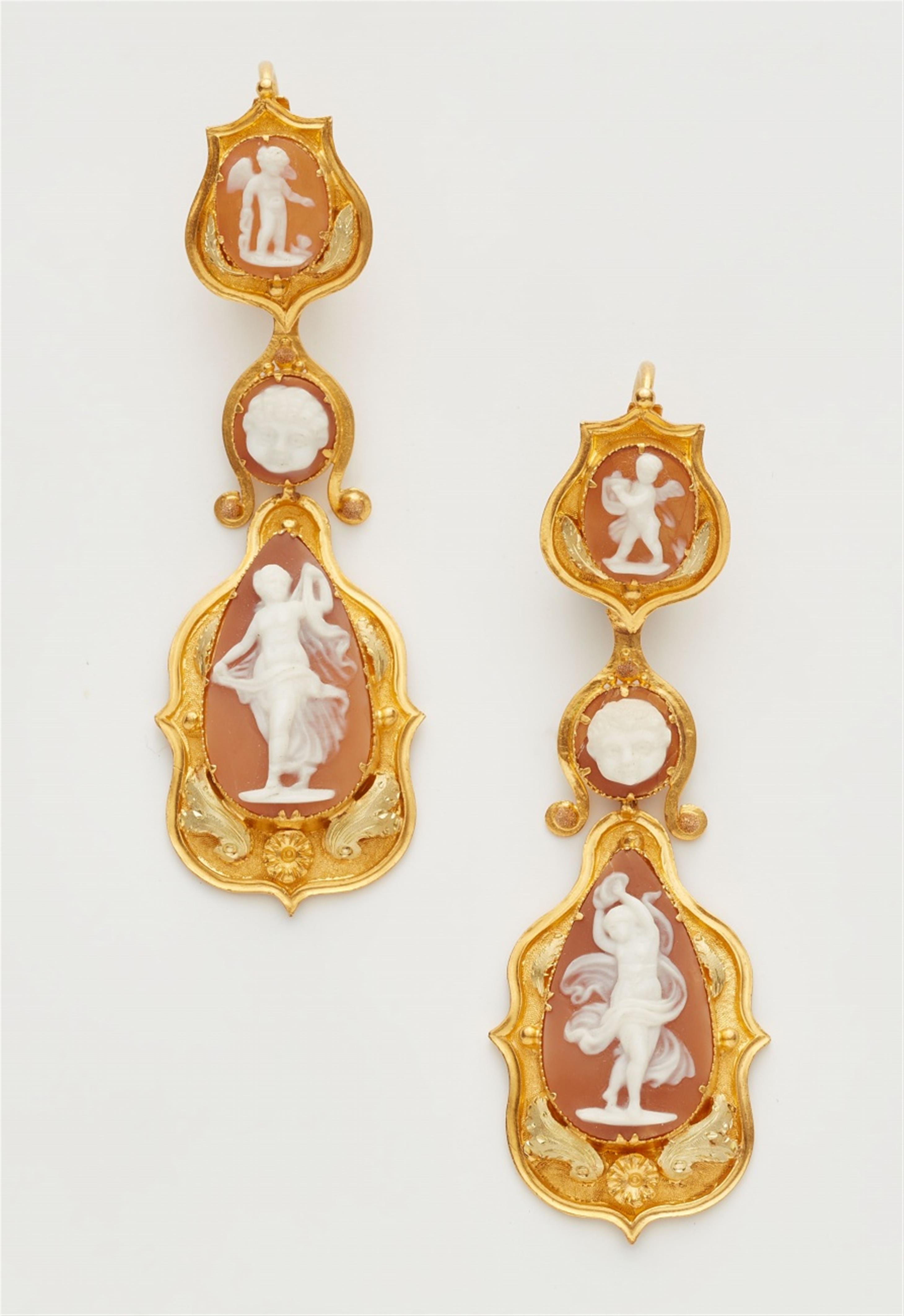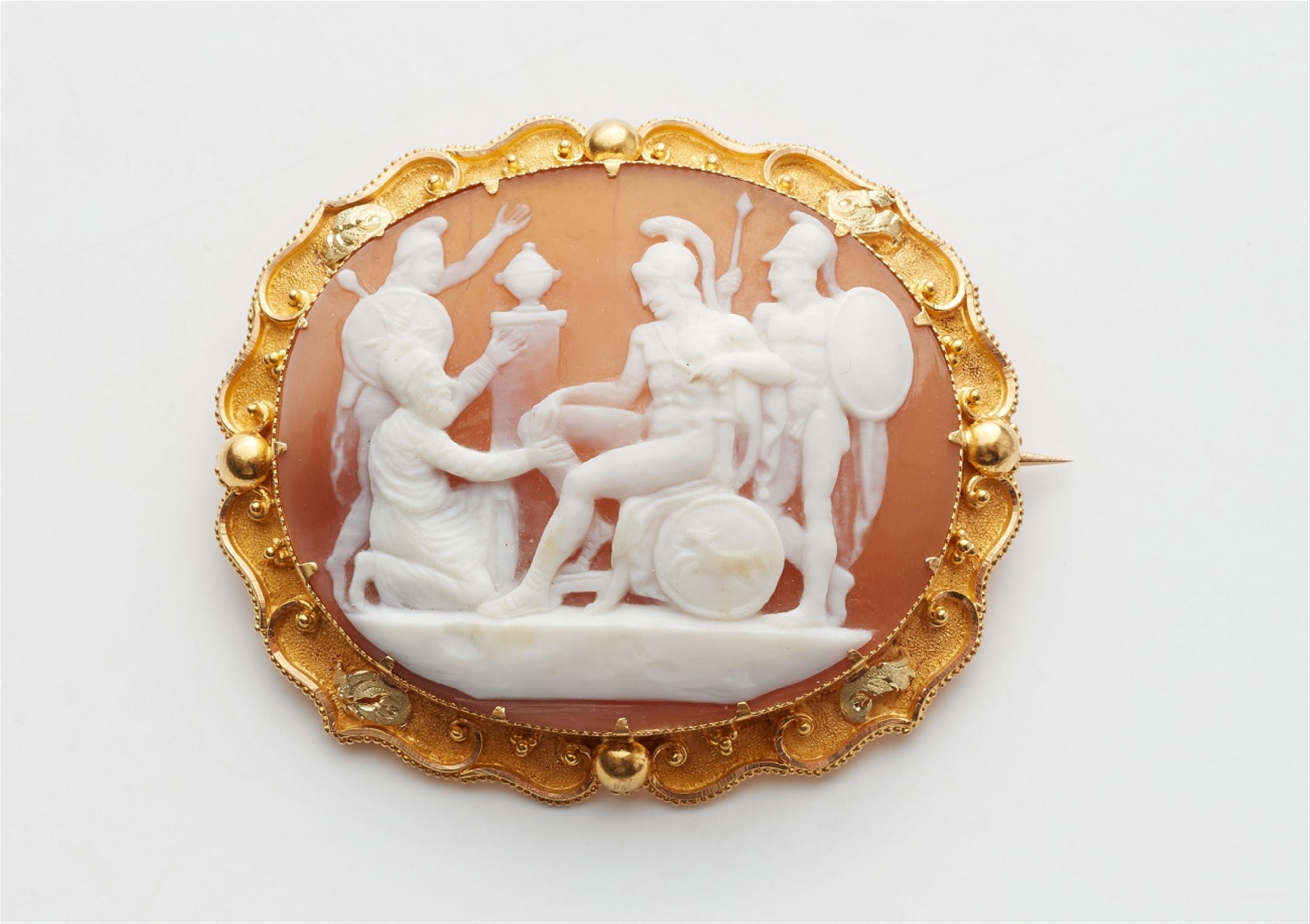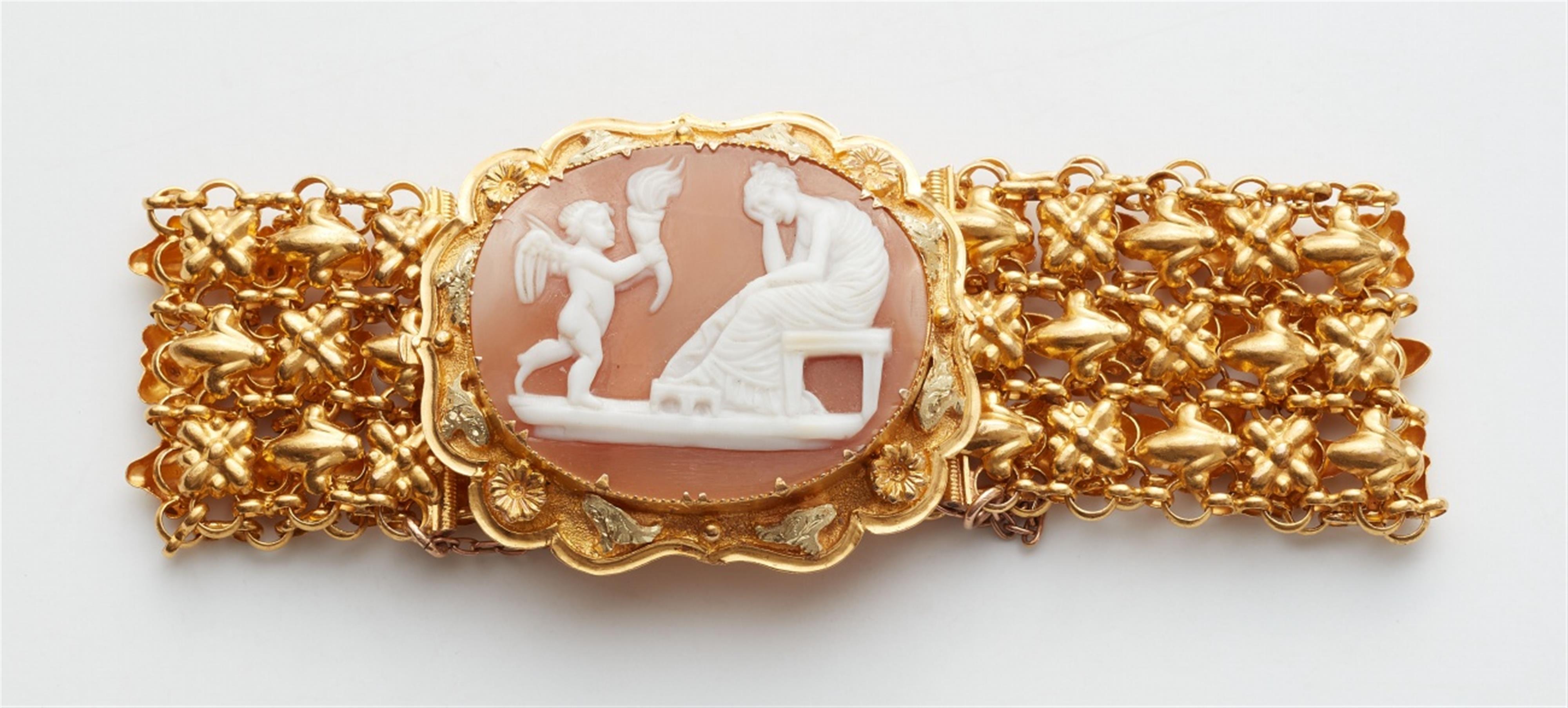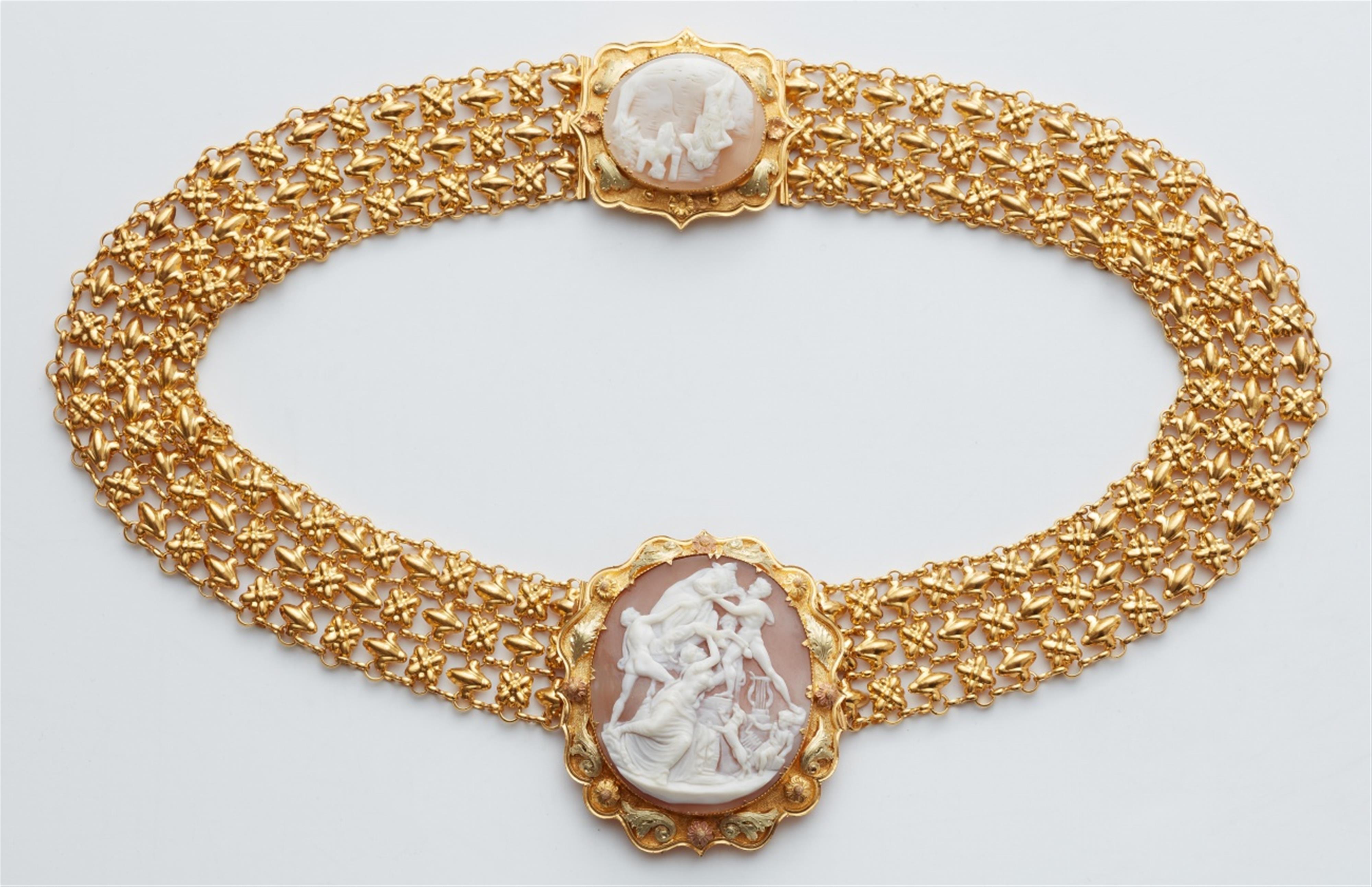A 15k gold parure with Italien cameos
Five-piece parure comprising a chain necklace and conforming bracelet formed from delicate repousse links with lily and rosette motifs, an oval brooch and a pair of drop earrings. All pieces decorated with shell cameos finely carved with mythological scenes after ancient Greek and Roman prototypes. The curved settings with chased relief decor in tri-coloured gold. In the original green leather box. L necklace 44 cm. L bracelet 19 cm. Brooch 4.5 x 5 cm. H earrings 6.8 cm. Total weight 129.45 g.
Presumably England, c.1830/40, the cameos Italian.
This very well-preserved parure is an excellent example of the passion for ancient art in the early 19th century. English travellers often acquired cameos in Italy as souvenirs of the Grand Tour and then had them transformed into elaborately designed parures at home. The wearer thus demonstrated their education and cosmopolitanism. In the centre of the necklace is, for example, the famous "Toro Farnese", a Roman marble group based on a lost Hellenistic original, which is now on display in the National Archaeological Museum in Naples. The representation on the brooch shows a scene from the Iliad: King Priamos kneels before the war hero Achilles and asks for the return of the body of his son Hector. The clasp shows a scene which was very popular in Victorian England: The lovers Romeo and Juliet. This reference could indicate that the parure was given as a romantic gift.

